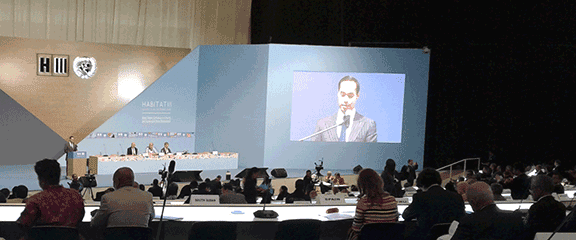 |
| by Matthew Arck Research Associate |
Early results of the PRO Neighborhoods program suggest that new ways of deploying capital can help improve the lives of Americans who live in low-income communities.
For more than two decades, community development financial institutions (CDFIs) have been lending money to improve social conditions in America’s disadvantaged neighborhoods. Despite their growing importance, however, CDFIs generally have been unable to raise enough capital to meet the potential demand in their underserved markets. The small size of most CDFIs (the average loan fund holds only $7 million in assets) and the risky appearance of their loans (due to the nature of their borrowers and locations) often scare off large institutional lenders and capital market buyers.
To encourage CDFIs to expand their lending capacity through collaborations, in 2014 JPMorgan Chase initiated the PRO Neighborhoods program. In the first year, JPMorgan Chase awarded $33 million to seven groups made up of 26 CDFIs with less than $75 million in net assets. In a new progress report, we found that awardees devised a variety of creative strategies to meet their need for additional capital.
Some of the awardees increased funding to community development projects through leverage or partnerships. In the Adelante Phoenix! collaboration, Raza Development Fund (RDF), committed its own funds to finance the riskiest portion of redevelopment projects (including site acquisition and predevelopment for multifamily housing and commercial space in industrial South Phoenix). By taking the riskiest position, RDF set the stage for other lenders (including traditional lenders) to fund the less risky phases of redevelopment. Several of RDF’s community redevelopment projects would not have been built if RDF had not provided the early financing.
The Expanding Resident Owned Communities collaboration helps residents of mobile-home parks to buy the land they live on. Through this collaboration, ROC USA expanded their community outreach to new areas, and combined their lending power with Mercy Loan Fund and Leviticus Fund. By collaborating on these large and unique loans, the group is able to make more loans while reducing the risk to each group member, thus increasing their ability to preserve this often overlooked source of affordable housing.
 |
| The Woodlands Community, where ROC USA helped residents to organize and provided financing for them to buy the land under their homes. |
One way to raise capital is to sell loans on the secondary market – a method employed by many financial institutions. As a part of the NALCAB Network collaboration, Affordable Homes of South Texas shared its first-mortgage product and its secondary market buyer with its partner Colorado Housing Enterprises (CHE). Now that it can sell mortgages, CHE has increased the velocity and volume with which it acquires capital and makes loans.
Another collaboration executes a more direct means of raising capital. The Calvert Foundation, one of the emerging Small and Medium Enterprises (SME) partners, sells a bond-like debt security directly to investors and uses the proceeds to fund loans to other CDFIs. Calvert markets these “Community Investment Notes” as a way to get competitive returns while supporting community development and social enterprises. The current interest rate on Calvert’s 10-year note is comparable to current rates for investment-grade corporate bonds. So far, Calvert has raised $3.8 million for its SME partners through the sale of Community Investment Notes.
The SME lending partners also obtain capital by selling portions of their loans on the secondary market. They are able to do so in part because they make Small Business Administration (SBA) loans, which are partially guaranteed by the federal government. By selling the guaranteed portions of the SBA loans, the SME partners obtain new capital that they can lend to low- and moderate-income income borrowers. In addition, the SME partners have shortened the time it takes to originate SBA loans by adopting a shared technology platform for SBA loan compliance and origination.
Taken together, the PRO Neighborhoods collaborations demonstrate a wide range of strategies to increase the flow of capital to underserved communities. The early results of their efforts offer promising evidence that collaboration can help CDFIs access capital, expand their lending, and do more to support low-income communities and their residents.
Read PRO Neighborhoods Progress Report 2016















